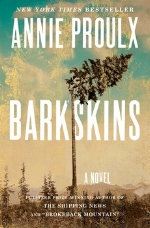The Idiot Elif Batuman (2017)
Throughout the 423 pages of this novel, the first-person narrator, Selin, readily admits the many things that she does not know. “I didn’t know what email was until I got to college” is her first sentence, and in the following pages we find that she doesn’t know what a psychedelic poster might be, that she doesn’t know about the wars between the Ottoman Turks and the Hungarians (despite being Turkish American), that she doesn’t know what neural networking is. At age eighteen, Selin has never played squash and never had sex. When the topic of Italian films comes up, she says, “I didn’t know anything about Fellini; my mental image was of a human-sized cat.” (45)
Selin constantly juxtaposes funny lines and hilarious scenes with expression of her serious confusion about becoming a writer, which she accepts as her fate, and about falling in love, which she hasn’t expected. She’s a freshman at Harvard in the fall of 1995, just like the novelist Elif Batuman, and she skewers all of Harvard’s pretentiousness in a most delightful way, while still putting on display the intelligence of her fellow students. Despite her protestations of ignorance on many fronts, Selin is a deep thinker, probing existential questions that only a very bright adolescent would consider.
At the same time, Selin is a naïve and introverted teenager, searching for hidden meaning in her class assignments, her email exchanges with her crush, and her discussions with friends in the cafeteria. It’s not that she feels inadequate for the challenges of a Harvard education—she’s well-read and quick with analysis. But she can spot the gaps in her knowledge.
Author Batuman went on after graduating from Harvard to earn a PhD in Russian literature, so it’s not accidental that she calls her novel The Idiot. Dostoevsky’s 1869 novel of the same title stars Prince Myshkin, who is such a good and decent fellow that he’s deemed stupid by the self-aggrandizing, worldly people around him.
Dostoevsky’s novel ends in tragedy. It’s hard to say how Batuman’s novel ends, and that’s not because I’m avoiding spoilers. I’m a reader who clings to plot structure in novels, so the lack of a strong plot in Batuman’s novel bothered me as I read. But I kept reading because the dialogue is so enjoyable and the depiction of a young woman on the edge of adulthood is so perceptive.
Here is Selin, discovering that men have the advantage in life: “I was overcome by the sudden sense of Ivan’s freedom. I realized for the first time that if you were a guy, if you were some tall guy who looked like Ivan, you could pretty much stop to look at anything you wanted, whenever you felt like it. And because I was walking with him now, for just this moment, I had a special dispensation, I could look at whatever he was looking at, too.” (177)
Batuman’s The Idiot takes us through an entire year in the life of Selin, from her September arrival at Harvard through the following August, when she returns to the United States from Hungary, where she taught English for the summer. At the end, I was left wondering what the second academic year of college would hold for Selin, but I was happy to have shared her account of that first illuminating year.




















